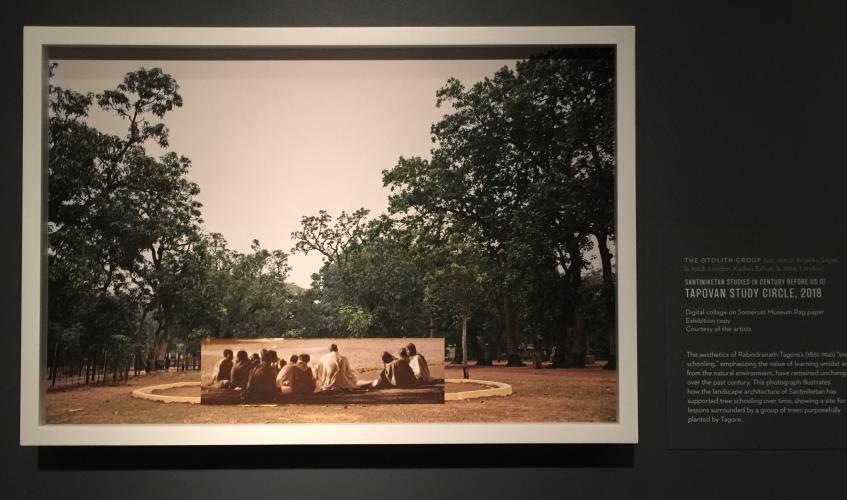Bachelor's degree with a double major in Chinese and Art in Peking University. Master of Art and Administration in New York University. She has served in the Macao Cultural Affairs Bureau, the New York City Department of Cultural Affairs and the Museum of Chinese in America, working as art administrator and curator. She is now working as an art educator and administrator in New York, as well as an independent curator and writer.

Picture: The Otolith Group used collage works to run through the past, present and future of education in India, the exhibition site of “disappearing future”, shot by the author.
For people familiar with financial investments, “speculation” should not be a particularly unfamiliar term. It is a future-oriented prediction that takes profits from volatile markets. The word has a meaning of “view” at the root of the Latin word, but unlike the common sense, it concerns much about the future; in fact, how we look at the future often influences the direction of our future development. Because of such a future orientation, “speculation” seems to have grown more alive in the humanities and social fields in recent years.
My first encounter with the term “speculation” was in studying the characteristics and values of small cultural institutions in the United States. The American art historian David Joselit wrote an article In Praise of Small in 2016, which talks about that as small art institution has a relatively free operation, it would have more possibility to “speculate” in the future. Through experimental activities and works, it could develop a new way of system operation. I have written inthis year's April issue to introduce the New York Bruce High Quality Foundation University. Its experimental education method shows the new possibility of future teaching, which is the example of the practice through “speculation”.
Recently, I came across this concept again, which was put together with design. A new design category was proposed by British designers Anthony Dunne and Fiona Raby, which is called “speculative design”. They try to promote a new design concept that reflects the imagined future through design, no matter in a new product or an ideal social form. This kind of design often proposed “try to imagine…” first. Then through the way of film and virtual narration, let the audience to anticipate future. Dunne and Raby now teach courses at Parsons School of Design at The New School. This course was specially taught by them and the related books were published.
I'm really interested in this practice of “speculation” after I watched a documentary called O Horizon. It is a newly commissioned work at the New York Rubin Museum of Art and a unit of the exhibition “disappearing future”. This film was produced by The Otolith Group in London. This group has become famous in the field of contemporary art in recent years. It combines sound image and historical archives for research-based creation and discusses various social issues. O Horizon has recorded the Visva Bharati University in west Bengal, founded by the leading Indian literary figure Tagore. Tagore founded the school in 1912 in a village far from the centre of the city, where he practised a teaching approach different from the west to returning to native culture and the natural environment. Under the Otolith group’s lens and clip, teachers and students sit around under the tree and debate. The Indian music, dance, paintings and sculptures inherited in the classroom, all of which demonstrate the possibility of integrating the eastern world view in the contemporary education.
But just as the exhibition's introduction explains, the show is trying to “speculate” the future. If you look up the school on the Internet, and Tagore's futuristic education philosophy, we don't seem to see any evidence of their importance in Indian society today. The creation of the Otolith group is a bit like a gold found in the sand sea of history, giving Tagore's ideas of a hundred years ago a glimpse of the contemporary spirit. In fact, this film does not reflect the true picture of India's contemporary education, but it is enough to let people “see” the alternative possibilities of education in the future. In my opinion, it is a kind of “future-oriented” creation.
I don't know if “speculative design” is a bit like the concept of old bottle of new wine. After all, the practice of conceiving the future in creation is everywhere. However, as a method, “speculation” really emphasises the ability of creators and practitioners of culture and art to “see” the future and encourage people to move towards that future society.